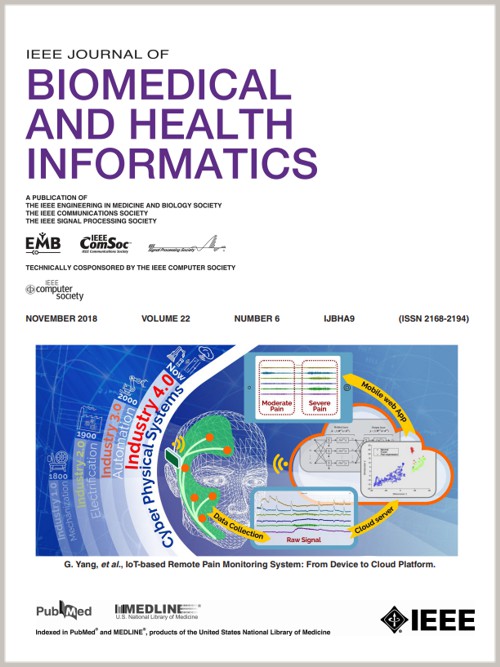利用多实例学习进行声学 COVID-19 检测。
IF 6.8
2区 医学
Q1 COMPUTER SCIENCE, INFORMATION SYSTEMS
IEEE Journal of Biomedical and Health Informatics
Pub Date : 2024-10-04
DOI:10.1109/JBHI.2024.3474975
引用次数: 0
摘要
在 COVID-19 大流行中,严格的检测计划至关重要。然而,检测既耗时又昂贵。基于机器学习的录音诊断工具能以低成本实现广泛的测试。为了实现此类算法之间的可比性,DiCOVA 挑战赛应运而生。它以 Coswara 数据集为基础,提供咳嗽、语音、呼吸和元音发音等录音类别。记录持续时间差异很大,从一秒到超过一分钟不等。基础模型在随机的短时间间隔上进行预训练。随后,基于自我关注的多实例学习(MIL)模型被纳入其中,利用较长的持续时间,对每段录音中的多个时间片段进行集体预测。为了参加 DiCOVA 挑战赛的融合类比赛,我们在其他融合方法中采用了线性回归方法,将与每种声音模式相关的最成功模型的预测结果结合起来。MIL 方法的应用大大提高了通用性,使融合类的 AUC ROC 得分为 86.6%。通过纳入以前未使用过的数据,包括声音模式 "持续元音发音 "和患者元数据,我们能够显著改善以前的结果,得分率达到 92.2%。本文章由计算机程序翻译,如有差异,请以英文原文为准。
Acoustic COVID-19 Detection Using Multiple Instance Learning
In the COVID-19 pandemic, a rigorous testing scheme was crucial. However, tests can be time-consuming and expensive. A machine learning-based diagnostic tool for audio recordings could enable widespread testing at low costs. In order to achieve comparability between such algorithms, the DiCOVA challenge was created. It is based on the Coswara dataset offering the recording categories cough, speech, breath and vowel phonation. Recording durations vary greatly, ranging from one second to over a minute. A base model is pre-trained on random, short time intervals. Subsequently, a Multiple Instance Learning (MIL) model based on self-attention is incorporated to make collective predictions for multiple time segments within each audio recording, taking advantage of longer durations. In order to compete in the fusion category of the DiCOVA challenge, we utilize a linear regression approach among other fusion methods to combine predictions from the most successful models associated with each sound modality. The application of the MIL approach significantly improves generalizability, leading to an AUC ROC score of 86.6% in the fusion category. By incorporating previously unused data, including the sound modality ’sustained vowel phonation' and patient metadata, we were able to significantly improve our previous results reaching a score of 92.2%.
求助全文
通过发布文献求助,成功后即可免费获取论文全文。
去求助
来源期刊

IEEE Journal of Biomedical and Health Informatics
COMPUTER SCIENCE, INFORMATION SYSTEMS-COMPUTER SCIENCE, INTERDISCIPLINARY APPLICATIONS
CiteScore
13.60
自引率
6.50%
发文量
1151
期刊介绍:
IEEE Journal of Biomedical and Health Informatics publishes original papers presenting recent advances where information and communication technologies intersect with health, healthcare, life sciences, and biomedicine. Topics include acquisition, transmission, storage, retrieval, management, and analysis of biomedical and health information. The journal covers applications of information technologies in healthcare, patient monitoring, preventive care, early disease diagnosis, therapy discovery, and personalized treatment protocols. It explores electronic medical and health records, clinical information systems, decision support systems, medical and biological imaging informatics, wearable systems, body area/sensor networks, and more. Integration-related topics like interoperability, evidence-based medicine, and secure patient data are also addressed.
 求助内容:
求助内容: 应助结果提醒方式:
应助结果提醒方式:


